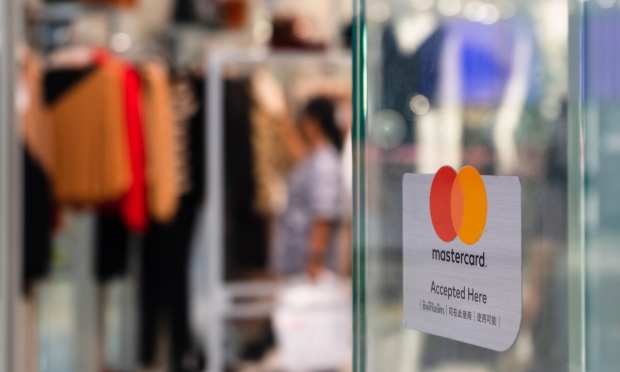Five Takeaways From Mastercard’s Holiday Spend Data

It could be argued that for the retail industry to pull off a 3 percent uptick for holiday sales this year was an astonishing feat. After all, consumers were pushed onto digital platforms early in the season and then pushed again as the pandemic surged even as they risked post-holiday package arrival. Add to that a lack of government stimulus and a 6.7 percent unemployment rate. But even still, as Mastercard got out first with its spending data, that widely reported 3 percent uptick is a bit below what could have been lofty expectations. As the season’s buying phase ends, and the dreaded returns begin, here are five takeaways from the Mastercard holiday spending report.
Overall spend: If the season were measured by traditional standards, from Thanksgiving through Christmas, overall sales would have bumped up by 2.4 percent, according to Mastercard. Take that period out to the “75 Days Of Christmas” and that number goes up to 3 percent. Mastercard’s Steve Sadove, senior advisor and former CEO of Saks called it a “healthy” number. Some predictions pre-holiday ranged as high as a 5 percent increase over 2019; some called for flat spending. Three percent is a healthy number, as Sadove said, but it is more of a testament to the retail industry’s marketing than it is an indication of consumer spending health. Led by Amazon, Walmart and Target, the retail industry managed to turn the holiday spending season into one long Black Friday. It worked from a spending perspective this year. And it will be tried again next year, hopefully absent the pandemic pressure.
Digital-first economy: The Mastercard report showed eCommerce accounted for 19.7 percent of overall retail sales — up from approximately 13.4 percent in 2019. It was driven by a 49 percent spike in eCommerce, which shows the expected dramatic increase in the digital-first economy. Again, kudos to the retail industry at all levels to be prepared for the radical changes that began as the pandemic set in. The number was also higher than many expected. For example, ad research firm GroupM predicted eCommerce would account for 17 percent of total retail spend. GroupM CEO Christian Juhl told The Wall Street Journal that “brands selling more products online are spending a greater portion of their budgets on digital marketing and placing more emphasis on advertising that directly drives sales,” and that shift also pushed digital sales.
Department stores: According to Mastercard, department stores saw an overall sales decline of 10.2 percent and online sales growth of 3.3 percent. Mastercard said that finding reinforced the “importance of omnichannel offerings.” We beg to differ. Department stores have made “omnichannel” capabilities a centerpiece of their pre-pandemic operational strategies, and those efforts did not bear fruit during the holiday shopping season. A good assessment of the situation comes from Marc-Andre Kamel, a partner who heads the global retail practice at Bain & Co., as interviewed in Harvard Business Review. “I don’t think department stores will completely disappear,” Kamel said. “There is value in creating an edited assortment for customer segments looking for the editing and curation that department stores bring. Many of these big retailers that are failing have lost sight of who the customers are they want to delight. They try to delight everyone, but they fragment their resources and wind up delighting no one.”
Shopping days: Black Friday was a shell of its former self and took a lot of negative comments from retailers as well as analysts as it turned into a big version of Cyber Monday this year. But the Mastercard report showed it was still the number one spending day. Black Friday is not the doorbuster it used to be, but it will need to be respected as a consumer spend event. What’s more interesting is what might be a new “black” shopping holiday, which is the last day that retailers guarantee online shipping. That will need to get more attention next year from a marketing and operations standpoint.
Categories: Any retailer that doubled down on the stay-at-home economy won this Christmas. Mastercard’s report showed that home furniture and furnishings experienced the strongest growth of any sector compared to 2019, up 16.2 percent in terms of total sales, and 31.0 percent online. Home improvement was up 14.1 percent, with eCommerce sales up a staggering 79.7 percent. That number is magnified by the capacity of buy online, pick up in-store (BOPIS) among home improvement retailers. “In a COVID-19 world, retailers also differentiate themselves through the quality of the click and collect offerings,” said a report from retail analyst company Profitero. “Target and Home Depot have been standout retailers in this respect during the pandemic.”
But what about apparel? It showed a decline of 19.1 percent year over year, and as a reminder that’s for online and offline sales. The apparel category has been hit hard by the switch to casual clothes as consumers work home, and as the data shows, was most likely hurt by the shift to the stay-at-home economy.
